Communication Chain Examples
All connections take one of the following forms. Terms used in this illustration are defined in the following table.
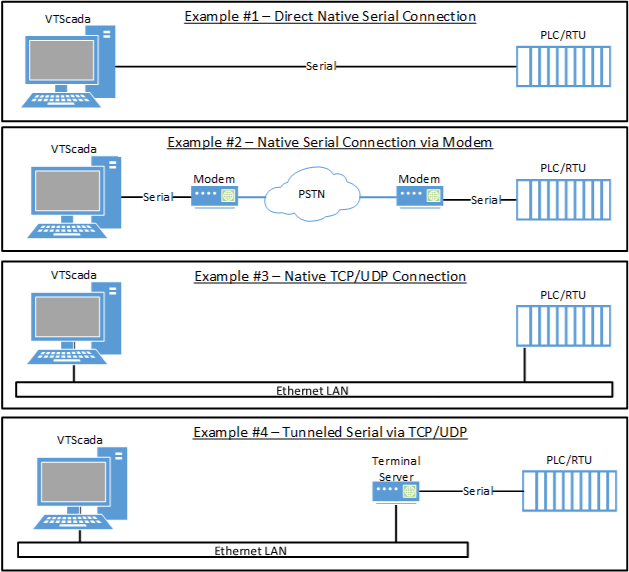
| Native Serial | Driver supports native serial communication as defined in protocol standard documents on PC serial ports using VTScada Serial Port tags. |
| Modem | Driver supports native serial communication as defined in protocol standard document(s) over modems defined in the operating system. |
| Native TCP/IP | Driver supports native TCP/IP communication to devices as defined in the protocol standard documents. |
| TCP/IP Tunnel | Driver supports tunneling of serial protocol via Ethernet connected TCP/IP to serial converters using VTScada TCP/IP Port tags. |
| Native UDP/IP | Driver supports native UDP/IP communication to devices as defined in the protocol standard. |
| UDP/IP Tunneled | Driver supports tunneling of serial protocol via Ethernet connected UCP/IP to serial converters using VTScada UDP/IP Port tags. |
| Other Connection | Driver supports device or protocol-specific interface or methodology not covered by these definitions. (For example, ODBC.) |
| Virtual PLC | Driver supports VTScada acting as a memory-mapped PLC or RTU that other devices can read from or write to. |
Common Arrangements
A few common arrangements follow. Many more are possible. Note that the driver tags in each example need not be all the same type.
Scenario 1:
VTScada I/O server with wired IP connection to field device transceiver with static I/P.
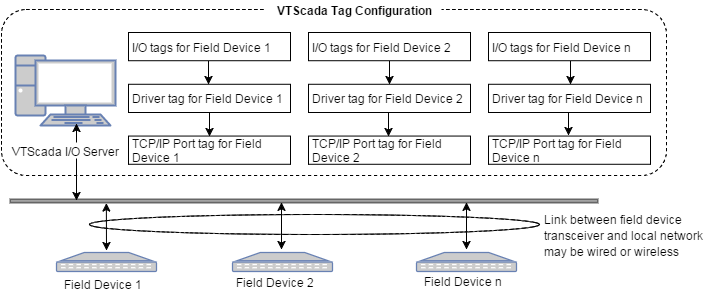
Scenario shown based on the use of a typical polling protocol such as Modbus, DF1 or ENIP/CIP
Scenario 2:
VTScada I/O server with wireless IP connection to field device transceiver with wireless static IP.
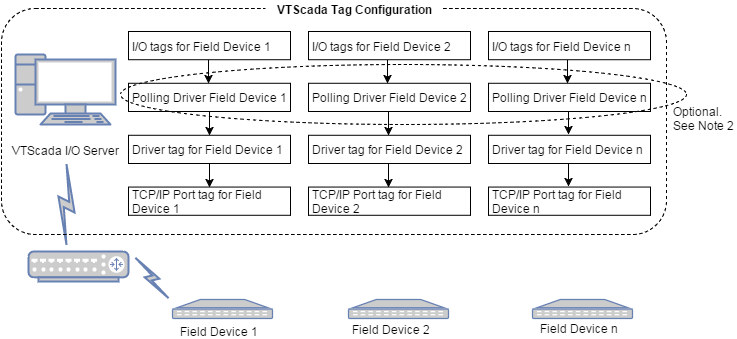
- Scenario shown based on use of typical polling protocol such as Modbus, DF1 or ENIP/CIP.
- The polling group may be excluded except in one of the following scenarios:
- Where all data from each field device is to be read at the same time, such as in a single block read (e.g. to minimize communication costs). In this case, the poll rate in the polling driver overrides the scan rate of the associated I/O tags.
- Where the field devices are to be polled in sequence, in which case the polling group ID must be the same for all devices.
- Where different protocols (driver tags) are used to communicate with different field devices.
Scenario 3:
VTScada I/O server with serial connection to field devices.
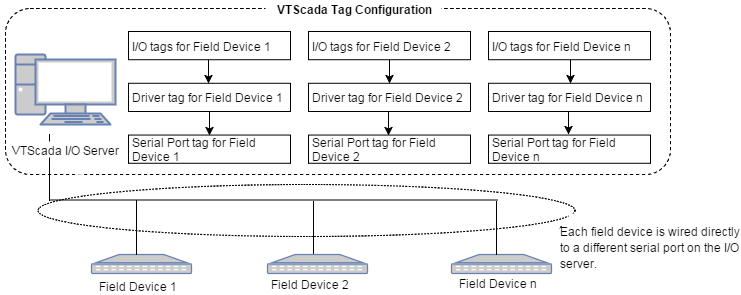
- Scenario shown based on the use of a typical polling protocol such as Modbus, DF1 or ENIP/CIP.
- If configuring the system for redundant I/O servers, use a serial to Ethernet converter to place each field device on an Ethernet connection
- If using COM port redirection software, continue to use Serial Port tags. Otherwise, use TCP/IP tags.
Scenario 4:
VTScada I/O server with wireless connection between base station transceiver and field devices.
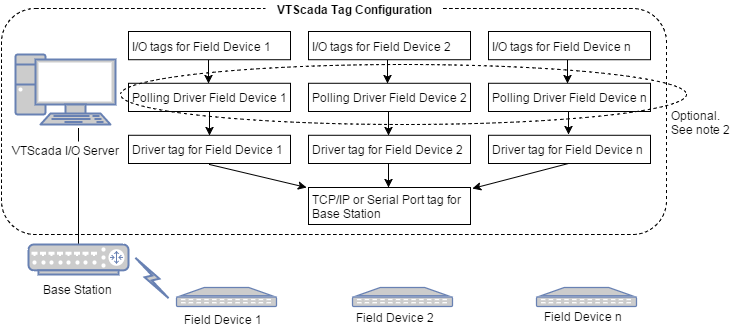
- Scenario shown based on the use of a typical polling protocol such as Modbus, DF1 or ENIP/CIP.
- Polling group may be excluded except in one of the following scenarios:
- Where all data from each field device is to be read at the same time, such as in a single block read (e.g. to minimize communication costs). In this case, the poll rate in the polling driver overrides the scan rate of the associated I/O tags.
- Where the field devices are to be polled in sequence, in which case the polling group ID must be the same for all devices.
- Where different protocols (driver tags) are used to communicate with different field devices.
- If configuring the system for redundant I/O servers, use a serial to Ethernet converter to place each field device on an Ethernet connection
Scenario 5:
VTScada I/O server with dial-up modem connection to field devices.
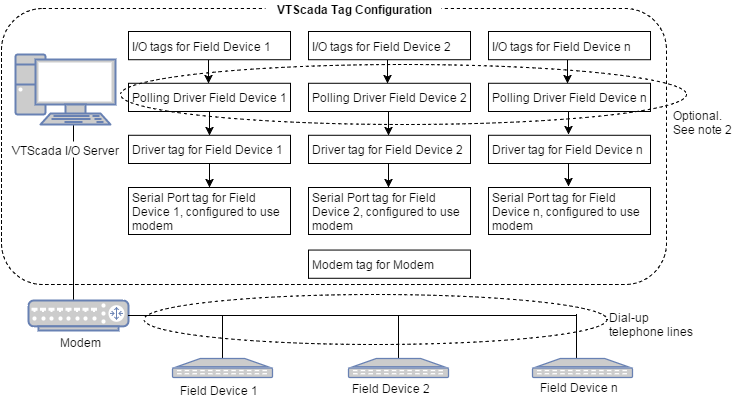
- Scenario shown based on the use of a typical polling protocol such as Modbus, DF1 or ENIP/CIP.
- Polling group may be excluded except in one of the following scenarios:
- Where all data from each field device is to be read at the same time, such as in a single block read (e.g. to minimize communication costs). In this case, the poll rate in the polling driver overrides the scan rate of the associated I/O tags.
- Where the field devices are to be polled in sequence, in which case the polling group ID must be the same for all devices.
- Where different protocols (driver tags) are used to communicate with different field devices.
- If configuring the system for redundant I/O servers, each server must have access to a modem.
- Multi-modem (pooled) configurations supported.
